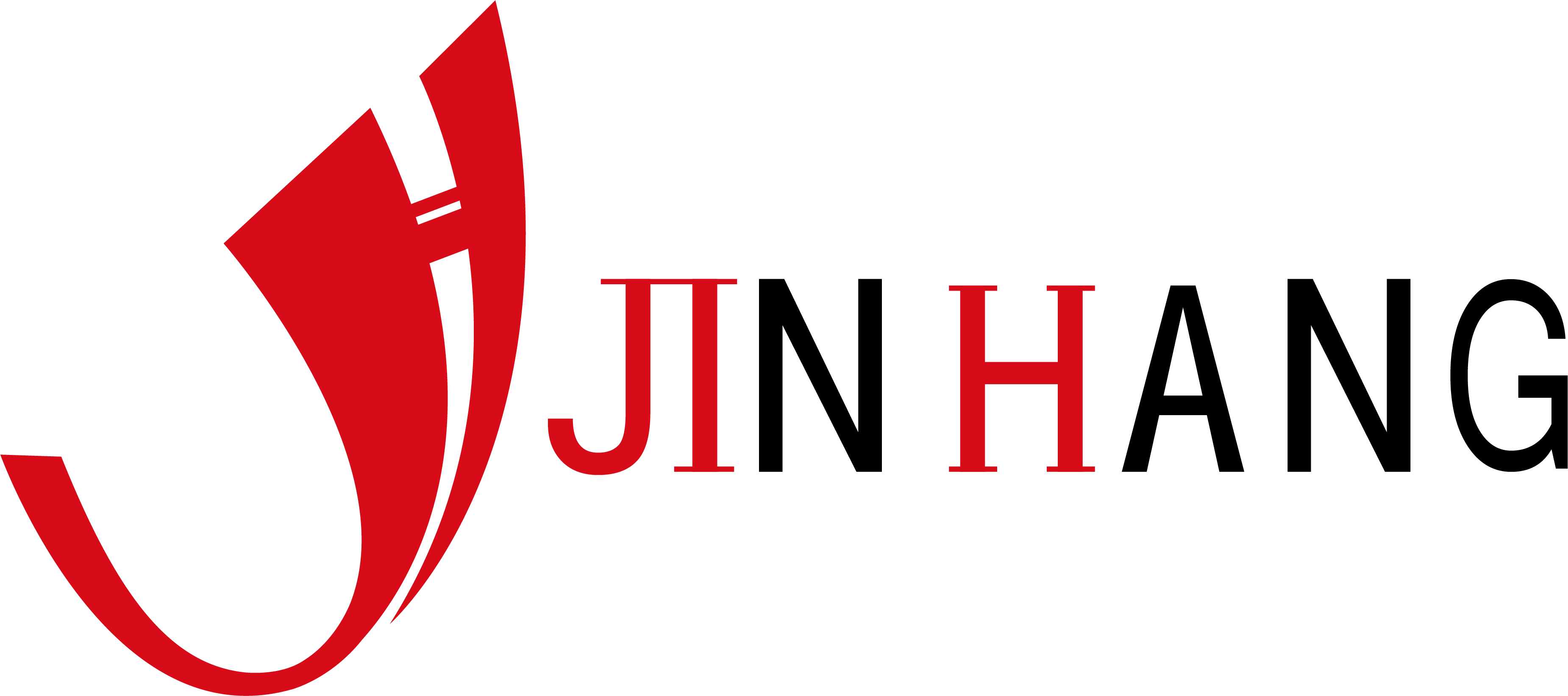How to deal with the surface damage of industrial rubber rollers?
In modern industrial production, rubber rollers are an important mechanical component and are widely used in printing, coating, papermaking, textile and other industries. However, during long-term use, the surface of rubber rollers often encounters various forms of damage, such as wear, scratches, aging, corrosion, etc. These surface damages will not only affect the service life of industrial rubber rollers, but may also lead to a series of problems such as reduced production efficiency and unstable product quality. Therefore, how to effectively deal with the surface damage of industrial rubber rollers has become an important task faced by all walks of life.
This article will explore in depth the causes and types of surface damage of industrial rubber rollers, as well as specific methods for dealing with these damages, including repair, remanufacturing and maintenance. Through the analysis of this article, you will be able to better understand how to extend the service life of industrial rubber rollers, reduce failures in production, and ensure the efficient operation of production lines.
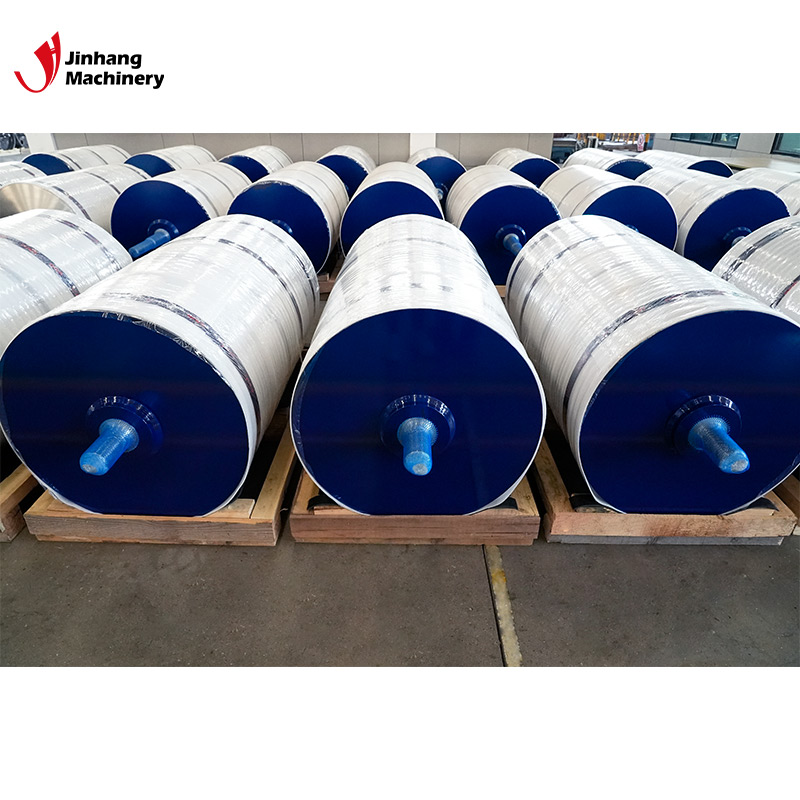
What are the causes of surface damage to industrial rubber rollers?
1.1 Wear
In the industrial production process, rubber rollers often rub against other materials or surfaces, and this friction will gradually cause wear on the surface of rubber rollers. Wear is one of the most common causes of surface damage to industrial rubber rollers. Especially under high-frequency and high-load operating conditions, friction will increase, causing the rubber surface to lose its original smoothness and elasticity, reducing its working efficiency.
1.2 Scratches and Cuts
The surface of the rubber roller is sometimes impacted by external hard objects or careless operation, resulting in scratches or cuts on the surface. These scratches not only affect the appearance of the rubber roller, but may also cause unstable work and even have adverse effects on the process, especially in precision machining.
1.3 Aging
During long-term use, the surface of the rubber roller will age due to the influence of high temperature, ultraviolet rays, ozone, chemicals or moisture. Aging is usually manifested as cracking, hardening or loss of elasticity on the rubber surface. This aging phenomenon not only makes the rubber roller lose its original function, but also may cause other mechanical failures and affect the normal operation of the production line.
1.4 Corrosion
In some industries, industrial rubber rollers may be exposed to corrosive substances, such as acids, alkalis, solvents and other chemicals. These chemicals will corrode the surface of the rubber roller and make it lose its original performance. Corrosive damage is usually manifested as surface discoloration, softening or peeling of the surface layer.
1.5 Excessive temperature
The surface of the rubber roller may deform or soften in a high temperature environment, especially during the operation of the high-temperature roller. If the temperature of the rubber roller exceeds its temperature resistance range, it may cause the rubber to soften, dissolve or damage the surface structure, causing serious damage.
1.6 Mechanical damage
When the industrial rubber roller contacts or operates with other mechanical parts, the surface may be deformed or damaged due to mechanical factors such as impact and extrusion. These mechanical damages may appear as indentations, depressions, etc., which need to be treated and repaired in time.
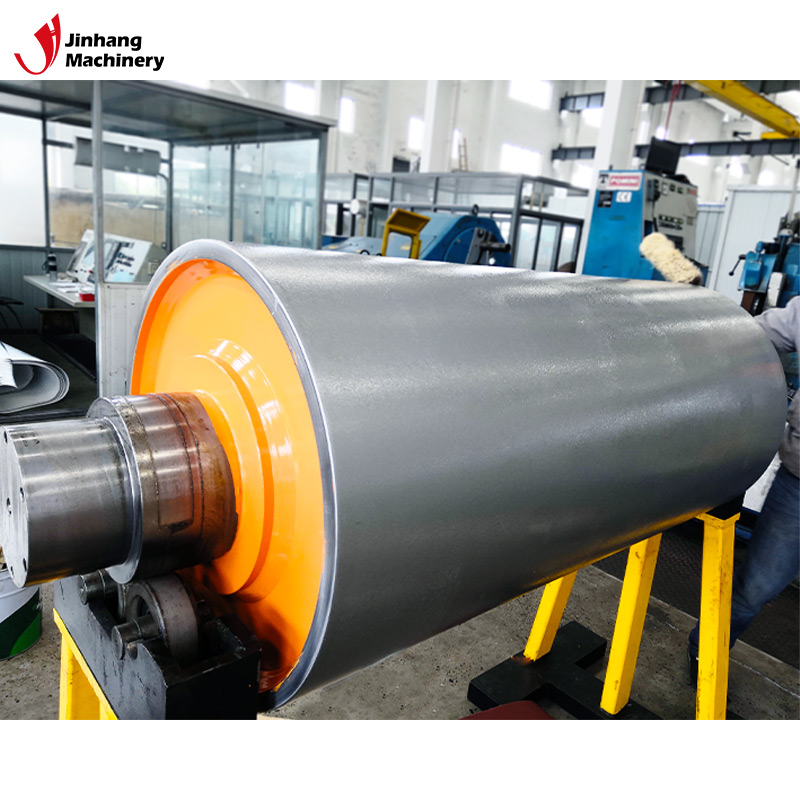
What are the types of surface damage of industrial rubber rollers?
2.1 Surface wear
Surface wear is one of the most common types of rubber roller damage. It usually occurs during the long-term contact and friction between the roller surface and other substances. In an environment of high load and long working time, the wear is aggravated, which may lead to a decrease in surface smoothness, thereby affecting the stability of the entire process.
2.2 Cracks and cracks
Cracks and cracks are usually caused by aging of the rubber or excessive tensile force. These cracks usually appear on the surface of the rubber roller and may be caused by aging of the material itself or external pressure. When the cracks expand, it may cause serious damage to the surface of the industrial rubber roller, or even complete failure.
2.3 Surface blistering
Surface blistering refers to the phenomenon of foam or bubbles on the surface of the rubber roller due to excessive temperature or chemical reaction. These bubbles not only affect the use effect of the rubber roller, but may also cause surface peeling or surface unevenness, affecting the overall process.
2.4 Corrosion damage
Corrosion damage usually occurs when the rubber roller is exposed to corrosive chemicals or high humidity environments. These corrosive substances react with rubber, causing the rubber to become less elastic, deteriorate or even fall off.
2.5 Depression or indentation
During the use of industrial rubber rollers, if they are subjected to large impact or pressure, the roller surface may be depressed or indented. This damage not only affects the surface smoothness of the rubber roller, but also may cause uneven pressure on the roller surface when it contacts the material, affecting the stability of the production process.
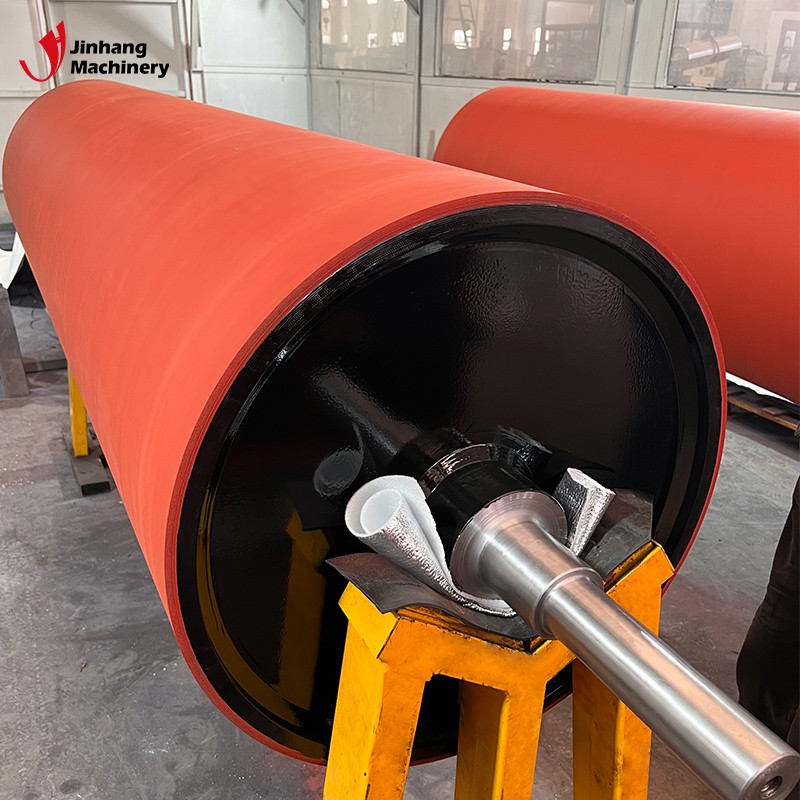
How to deal with surface damage of industrial rubber rollers?
For surface damage of industrial rubber rollers, we can take a variety of methods to repair and restore its performance. Common treatment methods include surface repair, recoating, polishing and remanufacturing.
3.1 Surface repair
For minor surface damage of rubber rollers, their original performance can usually be restored by surface repair methods. For example, minor scratches or wear can be treated with a special repair agent. The repair agent usually contains rubber materials, fillers and adhesives, which can effectively fill surface defects and enhance the elasticity and durability of rubber. For smaller cracks, the use of suitable repair materials can also effectively prevent their expansion.
3.2 Recoating
When industrial rubber rollers have large areas of wear, scratches or aging, recoating is a common repair method. Coating materials usually include highly wear-resistant rubber or polyurethane materials. By re-coating a new layer of rubber, the elasticity, smoothness and wear resistance of the rubber roller can be effectively restored. The choice of coating material should be customized according to the use environment and working conditions of the rubber roller to ensure its good performance in future use.
3.3 Polishing and grinding
For some industrial rubber rollers with minor scratches or friction damage on the surface, their surfaces can be repaired by polishing and grinding. Polishing can not only remove stains and small scratches on the surface, but also restore the smoothness of the surface, making the rubber roller more suitable for high-precision production needs. When polishing, it is necessary to select the appropriate abrasive according to the degree and depth of damage, and ensure uniformity during the polishing process to avoid excessive wear.
3.4 Remanufacturing
For severely damaged industrial rubber rollers, surface repair may not be able to fully restore their original performance. At this time, remanufacturing (i.e., complete reprocessing) may be a more appropriate choice. The remanufacturing process includes removing the damaged rubber layer, cleaning the roller body, and applying a new rubber layer to it. During the remanufacturing process, the mechanical properties of the roller body will be completely restored, and the new rubber layer can effectively restore its original function and performance, allowing it to be put back into use.
3.5 Coating protection
For rubber rollers that have already experienced corrosion, aging and other problems, in addition to repairing surface damage, their service life can also be extended by coating protection. By applying a layer of anti-corrosion or anti-aging protective coating on the surface of the rubber roller, the wear and aging process of the rubber surface can be effectively delayed, and the damage caused by environmental factors can be reduced.
3.6 Use protective covers or protective films
In order to reduce the surface damage of industrial rubber rollers, many production lines will use protective covers or protective films to cover the surface of rubber rollers. This protective measure can effectively prevent dust, chemicals, temperature changes and other factors from causing direct damage to the roller body, thereby extending the service life of the rubber roller.
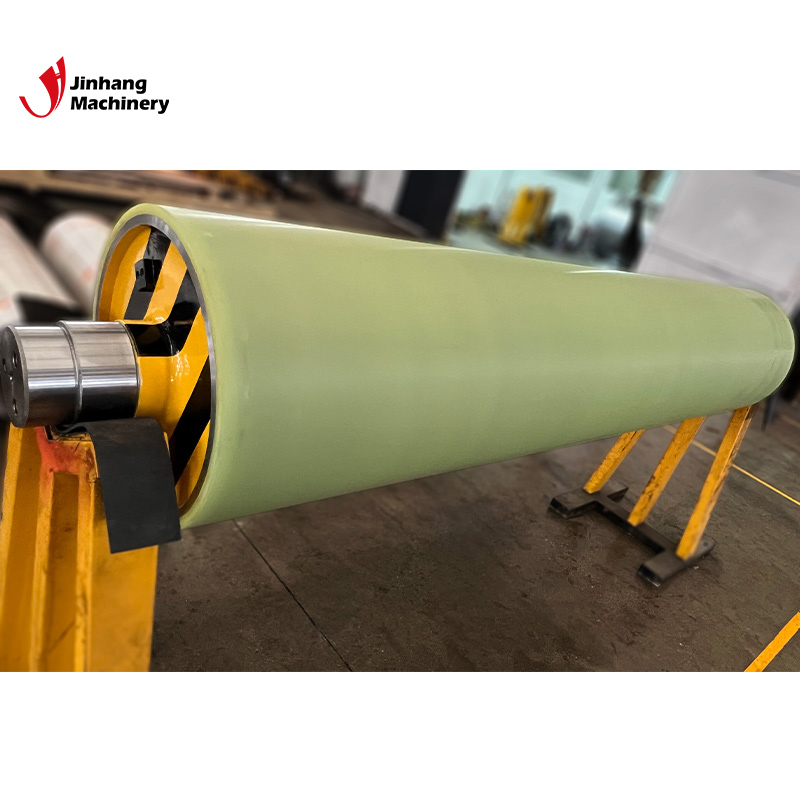
How to prevent surface damage to rubber rollers?
In addition to taking repair measures for surface damage to industrial rubber rollers, preventive measures are also crucial. Reasonable maintenance and operation can effectively reduce the incidence of rubber roller damage, thereby reducing repair costs and production failures.
4.1 Reasonable selection of rubber roller materials
According to different production processes and working environments, it is very important to choose suitable rubber roller materials. For example, in high temperature and high pressure environments, choose heat-resistant and pressure-resistant rubber materials; in places in contact with chemicals, choose materials with strong chemical corrosion resistance. Proper material selection can greatly reduce surface damage caused by inappropriate materials.
4.2 Regular inspection and maintenance
Regular inspection and maintenance of rubber rollers can detect surface damage in time and repair it. By cleaning, lubricating and inspecting the rubber roller regularly, small problems can be effectively avoided from accumulating into big problems, thereby increasing the service life of the equipment.
4.3 Control the production environment
The temperature, humidity, chemical concentration and other factors in the production environment will affect the industrial rubber roller. By controlling the production environment, the occurrence of surface damage to the rubber roller can be effectively reduced. For example, in an environment with heavy humidity, dehumidification measures can be taken; in a high temperature environment, cooling equipment can be used to reduce the aging and damage of the industrial rubber roller.
4.4 Correct operation method
Ensuring that operators understand and follow the correct operation method is also an important part of preventing surface damage to industrial rubber rollers. For example, when installing and replacing rubber rollers, avoid collisions and scratches; during use, avoid overload operation; in addition, regular cleaning of rubber rollers to prevent dust and dirt accumulation is also an effective means to keep them in good condition.
When it comes to industrial rolls, JH Machinery stands out as a reliable and professional supplier. Established in 2001, our ISO9001-certified factory specializes in producing cooling rolls, rubber rolls, and tungsten carbide rolls. We cater to industries like printing, mining, and lithium battery production, offering customized solutions to meet diverse needs. Enjoy low factory prices, wholesale options, and outstanding support when you choose JH Machinery for your purchasing needs.
